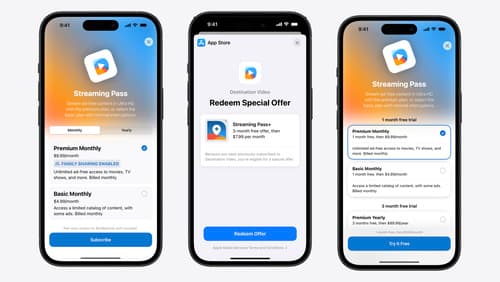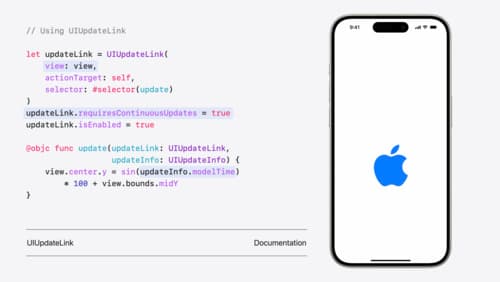NSLayoutconstraints conflicts
Asked on 2024-08-02
1 search
To address NSLayoutConstraint conflicts, you might find the following sessions from WWDC useful:
-
Get started with Dynamic Type: This session discusses dynamic layouts and how to handle changes in text size, which can help prevent layout conflicts when text size changes. It covers using
UIStackViewin UIKit to manage subviews and respond to changes in text size dynamically. -
What’s new in UIKit: This session introduces automatic trait tracking in iOS 18, which simplifies handling changes in traits like size classes. This can help reduce manual updates and potential conflicts in your layout constraints.
-
What’s new in AppKit: This session covers window tiling and layout constraints in macOS, which can be relevant if you are developing for macOS and need to manage window sizes and positions effectively.
These sessions provide insights into managing dynamic layouts and handling changes in traits, which are crucial for avoiding NSLayoutConstraint conflicts. If you need specific details or examples, you can refer to the timestamps provided.

SwiftUI essentials
Join us on a tour of SwiftUI, Apple’s declarative user interface framework. Learn essential concepts for building apps in SwiftUI, like views, state variables, and layout. Discover the breadth of APIs for building fully featured experiences and crafting unique custom components. Whether you’re brand new to SwiftUI or an experienced developer, you’ll learn how to take advantage of what SwiftUI has to offer when building great apps.

What’s new in StoreKit and In-App Purchase
Learn how to build and deliver even better purchase experiences using the App Store In-App Purchase system. We’ll demo new StoreKit views control styles and new APIs to improve your subscription customization, discuss new fields for transaction-level information, and explore new testability in Xcode. We’ll also review an important StoreKit deprecation.

What’s new in UIKit
Explore everything new in UIKit, including tab and document launch experiences, transitions, and text and input changes. We’ll also discuss better-than-ever interoperability between UIKit and SwiftUI animations and gestures, as well as general improvements throughout UIKit.
